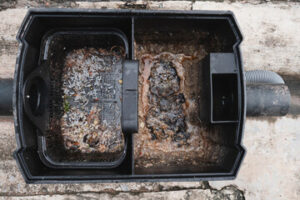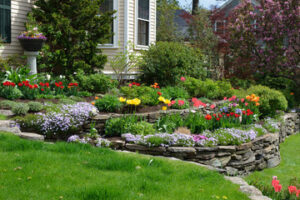Residential basements are valuable living spaces, but they can be subject to damage over time. Taking steps to repair and prevent issues like water intrusion, mold growth, and bowing walls can protect your home’s value.

Waterproofing, drainage systems, and grading improvements all play important roles in keeping basements dry and healthy. This article will explore common Basement Repair Naperville IL methods to address these problems.
Most homeowners are a bit concerned when they see basement wall cracks. They often do some research on the internet to learn more about the cracks and how they can be fixed. The internet can provide valuable information but it also contains a lot of misinformation that could steer homeowners in the wrong direction.
Generally speaking, cracks in basement walls are caused by structural shifting of the foundation. This is a normal occurrence and in most cases will not cause serious problems. However, some cracks can be a sign of other issues that require professional evaluation and repair.
Hairline vertical cracks that are no more than 1/16th of an inch in width don’t usually need to be repaired. They can still be a problem if they open up and allow moisture to enter the basement. This can lead to mold, mildew and other problems that may need to be addressed by a professional.
Horizontal and diagonal cracks in basement walls are often a more significant issue that should be professionally evaluated by a structural engineer. This type of cracking can indicate a shift in the foundation, and it can also be caused by heaving of the soil beneath the basement.
In many cases, basement wall cracks can be repaired by injecting a polyurethane or epoxy into the crack. This can offer a more permanent solution to water seepage as well as restore the structural integrity of the wall and foundation. This method is a good option for concrete and cinder block basement walls.
Settlement
When your home’s foundation settles, it can cause serious structural damage and a host of other issues. Foundation settlement often occurs as a result of improper construction or soil conditions, but it can also be caused by water infiltration and poor drainage. No matter what the cause, it’s important to identify and address basement settlement as soon as possible.
Cracks in walls and floors are the most common indicator of foundation problems, but you should also keep an eye out for other signs such as doors that don’t open and close easily. Leaning or bowing walls and musty odors can also indicate serious structural problems.
Basement settlement can be repaired in a variety of ways depending on the type of problem and its severity. For example, epoxy injection is a quick and inexpensive method of filling and sealing small cracks. It can also be used to repair concrete slabs. For more serious cracking or bowing, carbon fiber reinforcement is a fast and effective solution. Carbon fiber strips and straps are bonded to the inside of bowed or leaning walls, stabilizing them and preventing further movement.
Basement settlement can also be fixed by using helical piers. These are steel shafts with helix plates or blades that are driven into the ground under your home. They’re designed to lift and stabilize settled and sinking foundations, leveling them and repairing the cracks. Helical piers can even be used to lift and repair sunken crawl space supports, sinking floors, and heaving walls. They’re a great option for homeowners who want to avoid costly and disruptive foundation replacement.
Moisture
Moisture in the basement is a major issue that can lead to mold growth and structural damage. It can also cause high energy bills and musty odors. It is important to inspect your basement for moisture problems and take action. Moisture can be caused by condensation, poor drainage, or water seepage through foundation walls.
Moisture from condensation is usually seen as a white chalky residue on the walls and can be removed with a commercial dehumidifier. Water seepage through a foundation wall can be more difficult to detect. It is usually a result of poor connections between floor joists and the foundation walls or from ground movement. If a basement has been leaking for a long time, the soil may have shrunk, and hydrostatic pressure can push against the walls, causing cracks. A professional waterproofing system can include drainage channels and sump pumps to manage water seepage and prevent leaking.
Another common source of moisture is clogged gutters or downspouts that aren’t directing rainwater and melting snow away from the house. Gutters should be cleaned in fall and spring to remove debris. If water pools near the foundation, regrading your yard to improve drainage may be needed.
Water leakage through basement walls can also be caused by a problem with the footing or by rotted wood surfaces. In these cases, a professional inspection should be done to determine the cause of the problem and how it can be fixed. Moisture is also a common reason for basement cracks and settlement. In these situations, a waterproofing system can include basement footing repair and foundation anchors or braces to provide stability for your home’s foundation. These systems can also be combined with a drain tile system to eliminate the problem at its source.
Carbon Fiber Reinforcement
Carbon fiber is a modern, efficient and durable material that can be used to reinforce your foundation walls and prevent cracking or bowing. It’s a great choice for earthquake-prone areas, too, as it distributes soil pressure evenly across the foundation wall, reducing the risk of cracking and bowing during seismic activity.
In addition to its strength, carbon fiber is also long-lasting and resistant to environmental stressors, including moisture and temperature changes. It can stand up to these challenges, ensuring your basement stays safe for years to come.
Carbon Fiber Repair Can Be Installed Quickly
Unlike traditional repair methods, which require extensive excavation and disruption to your landscaping, carbon fiber repair is a non-invasive solution that can be completed in just a few hours or a day. This can help reduce downtime and the amount of time you need to spend away from your home.
First, your professional will clean and prep the surface of the affected area. This will ensure that the carbon fiber material adheres to the damaged wall. Once the area has been prepared, your certified applicator will apply a layer of resin to the surface. This resin will saturate the carbon fiber fabric and bond with it to form a strong, durable seal.
After applying the resin, your professional will apply a layer of carbon fiber to the damaged wall. Once the carbon fiber has been placed, your professional will use a tool to cut through any excess material. This will create a seamless, clean look and feel for the repaired area. The finished product will be sanded to smooth out any rough edges before being coated in a protective coating to ensure it lasts as long as possible.
Wall Anchors or Braces
Bowing basement walls are a structural concern that can be corrected with a variety of support systems. The most common are wall anchors and braces that can be installed by a professional. These systems are effective in preventing further bowing and moving the wall back to plumb.
Bowing is the result of excessive outside soil pressure on basement walls. This occurs when the expansive clay soil around your foundation is exposed to fluctuating rains. The clay absorbs moisture only to a certain point, and any excess water is then free to push against basement walls. This lateral pressure can cause cracks and bowing over time, which can allow water to leak into your basement, creating further damage.
If your bowing walls are not yet a serious problem, you may be able to fix them with carbon fiber straps or helical tieback anchors. These support systems are less invasive than a complete excavation and can be installed in one day. Carbon fiber repair uses strips of woven carbon fiber that are applied vertically to the wall. These strips are then coated with super-strong epoxy and secured to the wall with steel angles. The resulting strong, durable reinforcement stops further damage and permanently stabilizes the wall.
For more serious cases of bowing, you may need to have your basement walls straightened. This is a more extensive repair that involves excavating directly outside your foundation and replacing the damaged connecting framing elements in your basement. Hydraulic jacks are then used to slowly move the bowing wall back to plumb, and it’s then either reinforced by anchors or by carbon fiber straps.
Steel beams are another option for more extreme cases of bowed walls. These are placed vertically along a bowed or leaning wall and can prevent further movement, but they are also more expensive than wall anchors and can steal space from your usable basement area.


